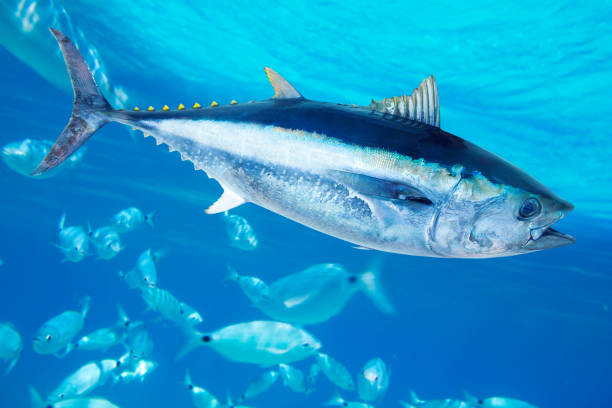World Laughter Day – Celebrating the Universal Language of Joy (May 4)
In a world increasingly fraught with stress, conflict, and complexity, there arises a need for simple, universal remedies that transcend borders, cultures, and beliefs. Among the most profound and yet often overlooked of these remedies is laughter. With its timeless power to heal, connect, and uplift, laughter is celebrated worldwide through an observance known as World Laughter Day, marked every year on the first Sunday of May—which, in 2025, falls on May 4. This special day serves not only to remind people of the therapeutic power of laughter but also to foster a global sense of unity and peace.

The Origins of World Laughter Day
The inception of World Laughter Day can be traced back to 1998, when it was created by Dr. Madan Kataria, a physician from Mumbai, India. Dr. Kataria is also the founder of the Laughter Yoga Movement, a revolutionary approach to health and well-being that combines unconditional laughter with yogic breathing techniques. Inspired by the belief that laughter can cure not just illness but also division, he proposed a day to celebrate the universal benefits of laughter and to bring people together in a shared moment of joy and harmony.
The first celebration took place in Mumbai on May 10, 1998, and it gathered just a few dozen participants. Since then, World Laughter Day has grown into a global event, observed in over 100 countries. Thousands gather in parks, public squares, and community centers to laugh together, perform Laughter Yoga, and promote messages of peace, well-being, and human connection.
Why Laughter?
Laughter is not merely a spontaneous reaction to humor—it is also a deeply physiological and psychological act that promotes holistic health. Numerous scientific studies underscore the positive effects of laughter, which include:
-
Reducing the level of stress hormones like cortisol and adrenaline.
-
Boosting immune system function by increasing antibody-producing cells.
-
Enhancing oxygen intake and stimulating the heart and lungs.
-
Triggering the release of endorphins—the body’s natural painkillers.
-
Improving circulation and reducing muscle tension.
-
Elevating mood and promoting a sense of overall well-being.
Moreover, laughter is contagious. Like yawning or smiling, laughter spreads among people. This makes it an essential social tool, capable of bridging gaps between cultures, religions, and ideologies. It enables people to bond, to forget grievances, and to share a moment of humanity in its purest form.
The Science of Laughter
From a neurological perspective, laughter involves multiple areas of the brain. The prefrontal cortex, amygdala, and hippocampus all play roles in processing humor and generating laughter. Laughter stimulates the ventromedial prefrontal cortex, an area associated with decision-making and reward processing.
On the psychological front, laughter is linked to positive emotional regulation. It helps individuals cope with anxiety, fear, and sadness. It can diffuse tension in difficult situations and act as a resilience booster in mental health recovery.
In a world where mental health issues are on the rise—with anxiety, depression, and chronic stress affecting millions—laughter provides an accessible, cost-free tool that offers both immediate and long-term relief.
Laughter Yoga and Its Role
The Laughter Yoga movement, founded by Dr. Kataria in 1995, plays a central role in the celebration of World Laughter Day. This form of yoga does not rely on jokes or comedy but is based on simulated laughter, combined with yogic breathing (pranayama). The philosophy is simple: the body cannot distinguish between real and fake laughter, and both have similar physiological and psychological benefits.
A typical Laughter Yoga session includes:
-
Clapping and chanting (usually “Ho-ho-ha-ha-ha”).
-
Deep breathing exercises.
-
Playful gestures and interactions.
-
Voluntary laughter turned into real laughter.
-
Meditation and relaxation at the end.
Laughter Yoga clubs exist in nearly every continent, and many of them organize mass laughter events, free sessions in public parks, and awareness campaigns during World Laughter Day.
Celebrations Around the World
World Laughter Day is celebrated with tremendous enthusiasm across countries. The celebrations are often joyful, colorful, and inclusive.
India
Being the birthplace of the movement, India celebrates this day with major gatherings in cities like Mumbai, Delhi, Bengaluru, and Pune. Thousands gather in parks to participate in Laughter Yoga, enjoy community picnics, and listen to wellness talks. Street parades, laughter competitions, and flash mobs are also common.
United States and Canada
In North America, many cities host laughter festivals, community workshops, and online Laughter Yoga sessions. Health and wellness centers offer free classes and seminars on the science of laughter. Schools and workplaces are also beginning to incorporate short laughter breaks into their routines.
Europe
Countries like the UK, Germany, France, and Italy celebrate with community gatherings, laughter flash mobs, and open-air yoga sessions. In some places, performances by comedians, clowns, and street artists accompany the festivities.
Africa and Asia
In nations like Nigeria, South Africa, Malaysia, and Indonesia, World Laughter Day is used as a platform to promote mental health awareness. NGOs collaborate with schools and community groups to educate people about the importance of joy, mindfulness, and emotional well-being.
Online Celebrations
With the rise of digital connectivity, online Laughter Yoga sessions and global live streams have become increasingly popular. In 2020 and 2021, when public gatherings were limited due to the COVID-19 pandemic, virtual laughter events brought people together across continents. That spirit of virtual connection continues, with global “laughathons” and interactive webinars taking place annually.
Laughter as a Tool for Peace
One of the founding principles of World Laughter Day is to promote world peace through shared joy. Dr. Kataria envisioned laughter as a global language that could dismantle barriers of race, class, and creed. Through synchronized laughter events, people from opposing ideologies can literally breathe in harmony.
One symbolic event called the “Global Laughter Moment” takes place at 12 noon (local time), when groups worldwide pause to laugh for a minute in a show of synchronized unity. This act is both literal and metaphorical—demonstrating the possibility of collective peace through mutual joy.
Laughter in Healthcare and Therapy
Laughter is increasingly being used in medical and therapeutic settings. The concept of laughter therapy or humor therapy is now well-recognized. Hospitals in many countries employ “clown doctors” or therapeutic humor specialists to bring cheer to pediatric wards, oncology departments, and elderly care centers.
For example:
-
In Brazil and France, hospital clowns are an integral part of pediatric care.
-
In the U.S., the Association for Applied and Therapeutic Humor (AATH) promotes humor in professional healthcare and mental health services.
-
Japan and South Korea have integrated humor therapy into geriatric wellness programs to help manage loneliness and dementia symptoms.
Scientific studies support these practices. Laughter has been shown to reduce pain perception, enhance immune function, and improve quality of life for chronically ill patients.
Quotes and Philosophical Views on Laughter
Laughter has long been admired by thinkers, writers, and leaders throughout history. Here are some timeless quotes that capture its essence:
-
“A day without laughter is a day wasted.” – Charlie Chaplin
-
“Laughter is the sun that drives winter from the human face.” – Victor Hugo
-
“The human race has only one really effective weapon, and that is laughter.” – Mark Twain
-
“Laughter is an instant vacation.” – Milton Berle
-
“Laughter connects you with people. It’s almost impossible to maintain any kind of distance or sense of social hierarchy when you're just howling with laughter.” – John Cleese
These perspectives emphasize how laughter is not only an emotional response but a social equalizer and spiritual cleanser.
How to Celebrate World Laughter Day
Whether you’re part of a Laughter Yoga club or just someone who wants to spread a little happiness, here are meaningful ways to observe World Laughter Day:
-
Join a Laughter Yoga session (in-person or online).
-
Organize a laughter circle in your community or workplace.
-
Share humorous videos, memes, or jokes to uplift others.
-
Volunteer at a hospital or care center to bring joy to patients.
-
Host a “Laughter Potluck”—a gathering where each guest brings a story, joke, or skit to make others laugh.
-
Practice laughter meditation: a simple session of sustained, conscious laughter.
-
Start your day with laughter—even fake laughter in the mirror can set a joyful tone.
The Future of Laughter as Wellness
As awareness about mental health grows, laughter is gaining greater legitimacy as a tool for emotional hygiene. Global trends in wellness, mindfulness, and positive psychology all support integrating more joy into everyday life. Schools are beginning to incorporate laughter and mindfulness sessions into curricula. Corporations are investing in employee well-being programs that include laughter breaks and creative playtime.
Moreover, medical science continues to uncover new ways in which laughter benefits the body and brain. The future may well include more “laughscapes”—public spaces designed for joyful interaction—or virtual laughter communities that help combat loneliness in aging populations.
Conclusion: A Laugh Shared, A World Healed
World Laughter Day is more than just a date on the calendar; it is a global reminder of the importance of joy in our personal lives and collective consciousness. In a time where digital disconnection, societal stress, and polarization challenge human unity, the act of laughing together becomes revolutionary.
Laughter is free. It has no borders. It does not discriminate. It heals, bonds, and transforms. On May 4, 2025, as people gather across cities and continents to laugh in unison, they will be enacting a quiet yet powerful revolution—one where happiness, peace, and human connection triumph over all.
So take a deep breath, smile wide, and let the laughter flow—not just on World Laughter Day, but every day. Because as the saying goes, “Laughter is the shortest distance between two people.”
Photo from: iStock





